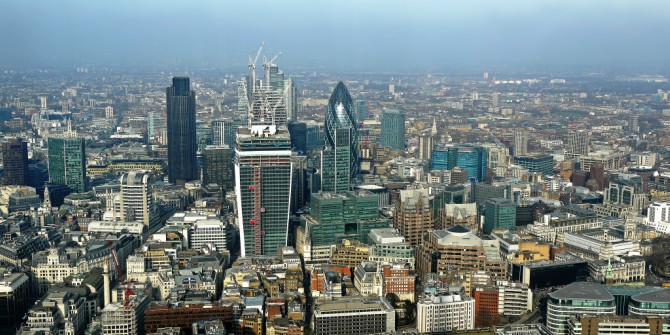 Container, by GREGOR, under a CC0 licence
Container, by GREGOR, under a CC0 licence
| This article was originally published here on 25 October. |
This deep disconnect between the widespread global gains from trade and popular discontent with trade policies was part of the motivation behind a recent study from the Peterson Institute for International Economics – a non-partisan, econometric assessment of the likely impact of both presidential candidates’ trade policies.
“Trade policy has thus seldom, if ever, risen to a top-tier issue in electoral politics,” writes Noland in the report, noting the protectionist rhetoric represents a break from a long-standing consensus dating back to the end of the Great Depression.
One key reason for this? “Successive administrations have been unwilling or unable to expand safety net programs for people who have lost their jobs or seen their wages decline,” Noland adds.
These shifts are due not only to trade and offshoring but also importantly to technological change and productivity gains, adds Noland. “Trade, however, has taken most of the blame in political discourse this year, breaking the postwar consensus around the liberal order of international economic cooperation and openness.”
The methodology selected by the authors was key to the project. By applying a trade model to existing macroeconomic data and breaking that data down into finer detail, the authors, Noland, Sherman Robinson and Tyler Moran, were able to identify potential effects on the economy and employment down to the state, city and county levels, as well as by industry. This allows for the sort of concrete illustration of the potential impact of trade retrenchment that broad platitudes about the benefits of free trade lack – and which makes them ring hollow to the millions of Americans who are still economically depressed.
The study’s findings can be summarised as follows: While Democrat Hillary Clinton’s stated opposition to the Trans-Pacific Partnership agreement is damaging to US leadership overseas, Republican nominee Donald Trump’s calls for renegotiating and possibly ripping up long-standing trade agreements risks a destructive trade war that would likely push the economy into recession and cost hundreds of thousands of jobs.
Figure 1. Job loss by state under a Donald Trump presidency
Another key element of the report is a legal assessment provided by Gary Clyde Hufbauer. It turns out that, despite the American system of checks and balances, the president has widespread powers to act unilaterally on trade – meaning Trump’s promises to hike tariffs on China and Mexico to 45 per cent and 35 per cent, respectively, are hardly empty threats.
So how do we return to a more constructive debate about trade?
First, governments need to get serious about the very real possibility that employment trends, particularly those driven by technology and robotics, may happen more quickly than public policy can adapt. Economic policymakers need to be hard at work laying the groundwork for large-scale future job creation needed to absorb workers affected by changing industries.
Second, unions need to be more honest with their members about the benefits of trade and the true culprits of weak employment and low wages: underlying economic weakness that requires a much more proactive official response, both in ensuring a sturdier safety net for those who lose jobs and providing avenues for them to find new employment.
The North-American Free Trade Agreement (NAFTA) didn’t kill U.S. manufacturing, despite so much noise to the contrary. China’s entry into the World Trade Organization did take a toll on American manufacturing jobs, but they also allowed many US firms to remain competitive and countless US consumers to pay lower prices for their goods. Still, given the xenophobic overtones of the Trump campaign, blaming foreigners becomes a convenient narrative.
Let’s hope the shift toward a more constructive discussion can happen quickly after the election hubbub is over. There’s evidence rising protectionism is already slowing global trade and hampering a still-fragile global economic outlook. Working together, the world can do a lot better.
♣♣♣
Notes:
- For a detailed discussion of the US presidential candidates’ views on trade, see Assessing Trade Agendas in the US Presidential Campaign, by Marcus Noland, Gary Clyde Hufbauer, Sherman Robinson and Tyler Moran, PIIE Briefing 16-6, September 2016
- The post gives the views of its author, not the position of LSE Business Review or the London School of Economics.
- Before commenting, please read our Comment Policy.
 Pedro Nicolaci da Costa joined the Peterson Institute for International Economics (PIIE) as editorial fellow in October 2015. He has been writing about economics and financial markets since 2001, first at Reuters and most recently at the Wall Street Journal. In 2010, he was a coauthor of the article “Club Fed: Ties That Bind at the Federal Reserve,” which helped spur the Fed to adopt a more open communications policy. His reporting in 2010 on the failure of some academic economists to disclose financial ties contributed to a new code of conduct adopted by the American Economic Association (PIIE adheres to a similar code of disclosure and data reproducibility adopted in 2014). His writing and research focuses on central banking, labour markets, inequality, and other macroeconomic issues.
Pedro Nicolaci da Costa joined the Peterson Institute for International Economics (PIIE) as editorial fellow in October 2015. He has been writing about economics and financial markets since 2001, first at Reuters and most recently at the Wall Street Journal. In 2010, he was a coauthor of the article “Club Fed: Ties That Bind at the Federal Reserve,” which helped spur the Fed to adopt a more open communications policy. His reporting in 2010 on the failure of some academic economists to disclose financial ties contributed to a new code of conduct adopted by the American Economic Association (PIIE adheres to a similar code of disclosure and data reproducibility adopted in 2014). His writing and research focuses on central banking, labour markets, inequality, and other macroeconomic issues.







Terrific article. Not enough people are making the case for trade and glad to see the facts laid out here substantiating pro-trade positions